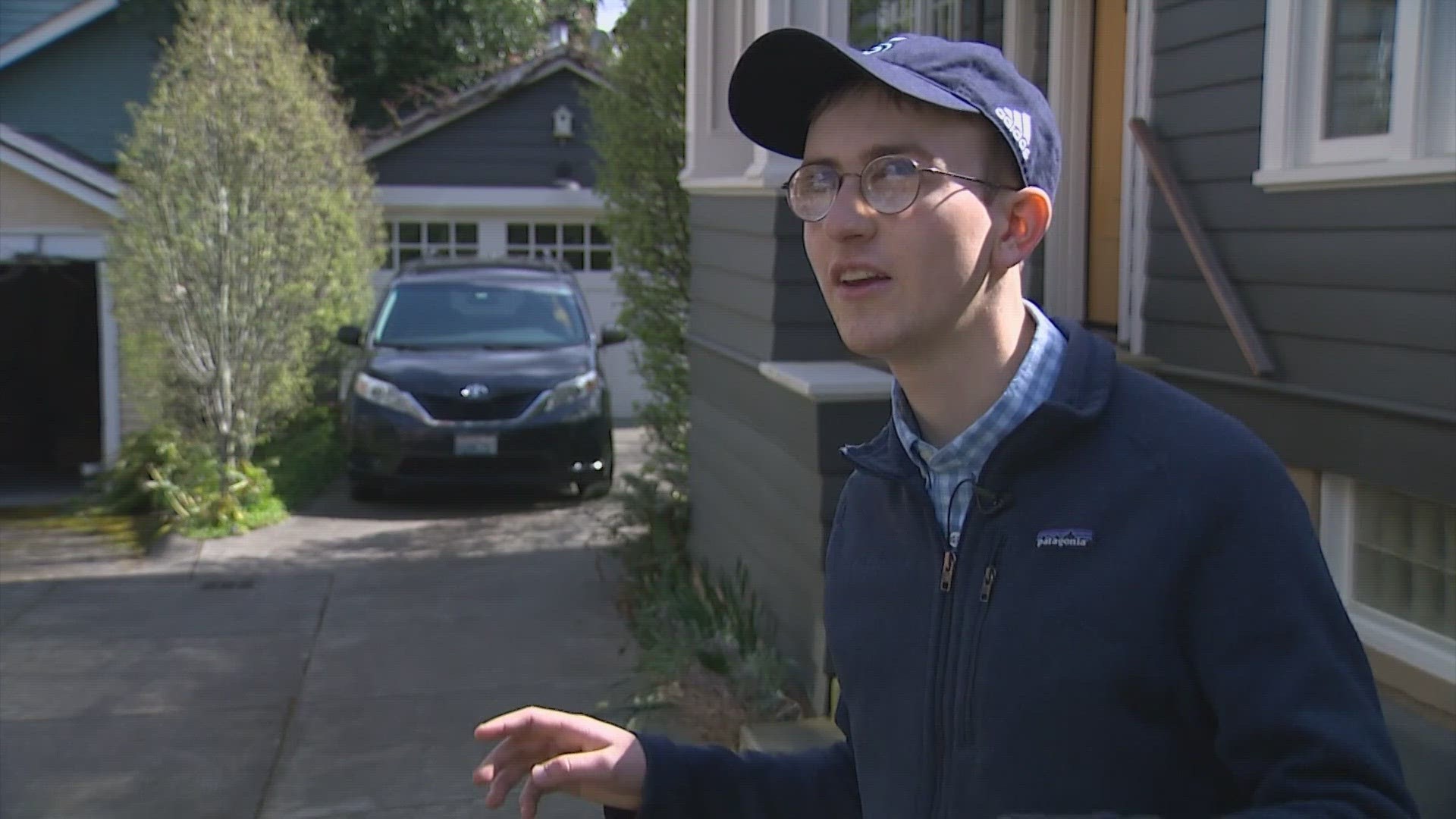SEATTLE — Charlie Howe is a person who has low vision. In the summer of 2021, he took note of how his commute to get to the Ryther campus in Northeast Seattle was difficult and dangerous, and he decided to take action.
With help from Disability Rights Washington, his daily journey was documented on video, showing where the sidewalk ends and where the unpaved, and uneven, path begins. It was an extra obstacle for someone already dealing with vision impairment.
"I can only see 5 percent,” Howe said. “I have no peripheral vision.”
His commute would bring him to the bus stop on Lake City Way. From there he walked along Northeast 95th Street to Ryther campus.
"Sometimes some of the staff would escort him up and down from the bus stop just to make sure he got there safely,” said Karen Brady, Ryther's executive director. "Charlie finally decided that was enough, and he was going to try and solve that issue for himself and everyone else."
"It is a huge problem for all pedestrians, especially people with disabilities,” said Cecelia Black, a community organizer with Disability Rights Washington.
Black points out that it is an issue impacting nearly a quarter of Seattle's streets.
"There is 11,000 blocks that are missing sidewalks,” said Black. “Most often we have to use the street and that is a really dangerous place to be."
Year after year, the number of crashes involving pedestrians has increased. In 2021, WSDOT said there were 538 in Seattle. The following year the number was 593, and last year there were 615 crashes.
Fiercely determined, Howe launched a campaign with Disability Rights Washington that caught city hall's attention.
"It says a lot about the difference one person can make,” said Brady.
Now near Ryther, a new sidewalk provides a more accessible path.
"I feel proud and appreciated,” said Howe. "It is going to make it so much safer."
When it comes to the city’s missing sidewalks, Disability Rights Washington said based on the current annual rate of sidewalk construction, it would take 407 years before every Seattle street had a sidewalk.
“It is a huge problem, and it is a really expensive problem,” said Black.
Black said it comes down to funding. Voters will decide on a transportation levy in November, and the outcome could impact how much progress the city makes with its missing sidewalks.

